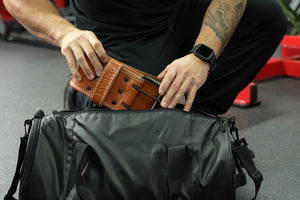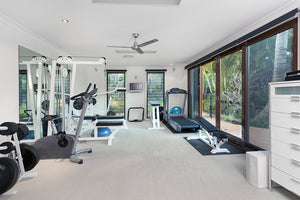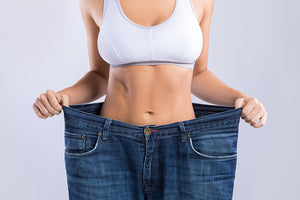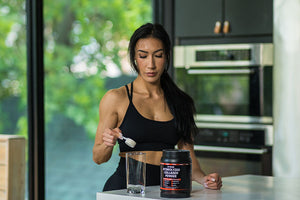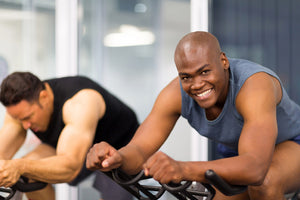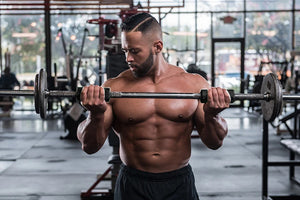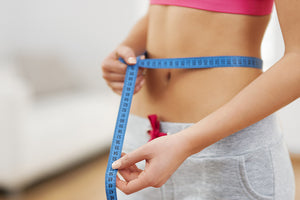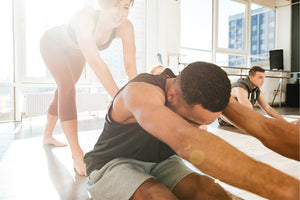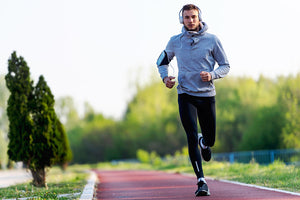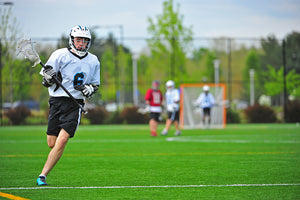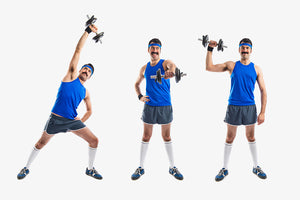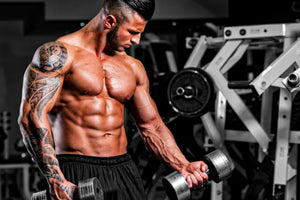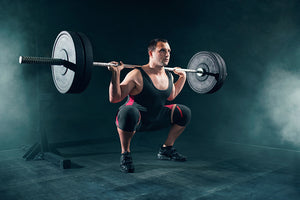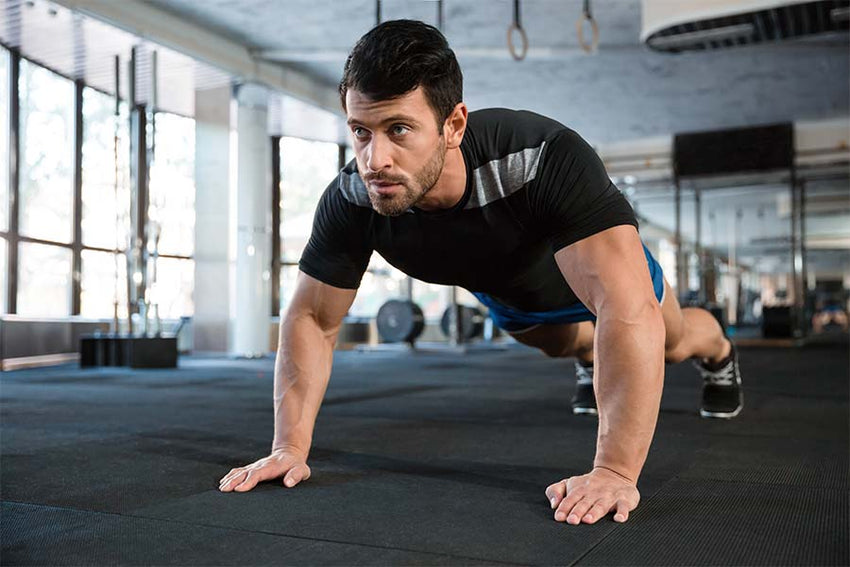It's a pain to get hurt and have to stay out of the gym or practice for weeks, and sometimes it can even keep you from competing in a tournament. You don’t know when you'll get hurt again, but physical therapy can help you prepare for it.
Physical therapy can avoid injuries by increasing your body's flexibility. It greatly enhances your functional strength by increasing your body's range of motion and reducing your overall physical soreness.
It provides numerous advantages for sportsmen and is required if they wish to excel in sports. It is not surprising that many of the finest athletes in nearly every sport visit their local Physical Therapist on a regular basis for treatment and rehabilitation.
It aids in the improvement of mobility, restoration of movement patterns, increases strength, and the healing of injuries. It is a method for treating pain, stiffness, and other problems your body might face.
The following are seven reasons why athletes should participate in physical therapy.
1. Improved Range of Motion
During sports, the joints are subjected to forces that exceed the tissue's resistance threshold. In this state, injured tissues are more susceptible to failure, ripping and tearing, and additional harm.
When it is time for an athlete to return to their sport, an advanced physical therapist must push their patient to the maximum of their tissue's potential to prepare the tissues for strenuous practices.
Physical therapists are expected to push an athlete's joints to their ultimate limit while ensuring no discomfort, resistance, laxity, or uncertainty to improve their range of motion.
2. Prevents Surgery
In many cases, surgery can be avoided or postponed with physical therapy; however, the conditions must be just right, and the patient must be prepared to put in the necessary effort.
According to the findings of a study, many people all over the world were able to avoid having surgical procedures by participating in physical therapy.
Surgical intervention can be avoided if the warning signs of an injury are attended to in a timely manner. Some signs that you need therapy are the inability to move freely, lack of flexibility, tension, and soreness.
Applying force to a muscle that isn't working increases your risk of injury. Alternatively, to a joint that has been misaligned.
The sooner you reach out for therapy, the lesser the chances of surgery.
3. Improved Body Posture & Alignment
Establishing correct alignment and posture is a prerequisite to beginning any practical action. If the alignment of your body is flawed due to impact or muscle soreness, your body will compensate for the movement of that particular part with another set of muscles.
This causes motion compensation, like having an extra set of wheels. You can only utilize it for a limited time until the tire entirely blows out.
Physical therapy can rectify the compensation by realigning your body and improving your posture. This will aid in harmonizing and stabilizing your body, allowing you to move correctly and avoid injury.
A visit to the physical therapist for an alignment assessment is a must if you're planning on increasing the stress on your body through more intense physical workouts. You can also use knee and ankle compression sleeves to protect your joints.
Related Article: Here's How You Can Fix Rib Flaring Posture Imbalance
4. Refined Muscle Balance
Athletes frequently train the same muscle group to improve their sport and perform at a high level. This can result in repetitive training.
When this occurs, the stressed muscles can get overworked compared to their counterpart, causing them to become the predominant muscle group.
In addition to the training that is unique to their sport, athletes need to train muscle groups to generate synergy in their bodies, balance the strain placed on their joints and tendons, and prevent injuries.
Physical rehabilitation techniques can help create that synergy by applying stress to the weaker muscles and improving the communication between muscle groups through physical training.
5. Boosted Strength, Power, and Speed
Depending on the sport, an athlete may be required to possess a wide range of power, strength, and speed combinations.
Physical therapy teaches athletes how to work with their bodies to focus on strength, power, and speed while staying in top shape.
Athletes must load their muscles with heavier weights, perform more sets, and fewer repetitions per set in order to achieve hypertrophy; a process of increasing the size and strength of the muscles.
A significant number of patients perform three sets of ten reps with weights that are too light to produce genuine physical strength.
To increase an athlete's strength, physical therapists challenge them to work as quickly as possible against some kind of opposition.
Most sports require players to move quickly, and physical therapy helps patients perform customized workouts to coordinate their body parts in environments with a stable platform to generate results.
Related Article: 12 Mistakes That May Be Hindering Your Progress At the Gym
6. Enhanced Neuromuscular System
Emphasizing neuromuscular control means giving priority to one's capacity to move and function effectively.
When you move in the correct manner, you reduce your risk of injury, lack of flexibility, improper alignment, uneven muscular tension, and strain. And it is precisely at this time that enhancing your movement strength and speed will be more effective for you while also reducing the risk of damage.
Physical therapists who specialize in sports medicine are responsible for ensuring that all of the body's components are in sync with one another.
The movements of the joints are the primary focus of neuromuscular coordination, with the muscles, tendons, and nerves all playing supporting roles.
By concentrating on certain areas of the body, an injured athlete can get ready to go back to playing sports by improving the speed at which they move during workouts and gradually increasing the amount of weight they lift.
7. Relieves and Eliminates Pain Instantly
The use of physical therapy is an excellent strategy for lowering levels of muscle tension, alleviating discomfort, and enhancing sports performance.
Athletes participating in physically demanding sports like rugby or football may require rapid pain relief throughout their competition.
Before an athlete is taken in for additional testing, various physical therapy methods, such as applying hot and cold packs, taping injured regions, and performing dry needling, may assist ease the athlete's pain.
Physiotherapy can alleviate muscle tension by concentrating on the origin of the patient's pain. As a result of speedy treatments provided by physical therapy, athletes have less need to rely on opiate drugs for pain management, which has the added benefit of reducing the risk of addiction.
Athletes can better manage their discomfort and get back into the game faster with the support of physical therapy, which helps treat pain caused by sports, facilitating a speedier and less complicated recovery from injuries.
When to Seek Physical Therapy?
Professional and emerging athletes should seek advice and treatment from an elite sports physical therapy specialist when they have:
A Limited Ability to Participate in Sports
Athletes frequently wait an excessive amount of time before consulting a sports physical therapist for help. The athlete continues to compete despite their injury until they recognize that the discomfort will not go away on its own.
They then take a break from their sport for roughly two to three weeks in order to attempt and get back to the same level they were at before they got injured. However, if they do nothing during the period designated for relaxation, the discomfort will not go away completely.
They may be able to return to their sport with a surprising capacity to play if they seek the guidance of a physical therapist who specializes in elite sports physical therapy.
Early Sports Injury Treatment
The best advice is to see a sports physical therapist as soon as possible after the onset of symptoms that last more than a few days or when the symptoms interfere with your ability to train or participate at the level you desire.
Treating acute and mild symptoms, such as pain or tightness, is far easier than treating chronic diseases.
Sports Injury Prevention
The occurrence of new injuries and the recurrence of previous ones must be avoided to achieve true prevention.
Understanding the necessary mechanics or movements, loading the appropriate tissue or unloading the opposite tissue, and doing so without causing damage to other tissues are all extremely important factors in keeping elite and recreational players engaged in their activity.
For athletes to train correctly, advanced physical therapy is worth its weight in gold. This allows athletes to improve their performance and limit the risk of injury.
Types of Physical Therapy for Athletes
Physiotherapy comes in a wide variety of forms, and athletes can benefit from each one. The following are some examples of common modalities:
- Exercise Therapy: Exercise is an important part of any physical therapy program. Physical therapists are able to assist athletes in accomplishing their objectives by guiding them through a series of targeted exercises that are intended to enhance the athlete's strength, flexibility, range of motion, and balance.
- Massage Therapy: Massage therapy has been shown to enhance blood flow, reduce inflammation, and relieve muscle tension and stress. This can result in faster healing times, a lower chance of injury, and increased overall performance.
- Ultrasound Therapy: Ultrasound therapy uses sound waves to create heat that penetrates deep into the muscles and tissues. This can enhance the range of motion, relieve pain, and encourage healing in the affected area.
- Hot/Cold Therapy: The application of hot or cold temperatures can help treat injuries and reduce pain. The use of cold therapy can help numb the pain and reduce swelling, while hot therapy can promote blood flow and help reduce swelling internally.
- Electrical Stimulation Therapy: Electrical stimulation therapy is the application of electrical currents to the body in order to stimulate the nerves and muscles. This may assist in lowering levels of discomfort, enhancing the function of muscles, and accelerating the healing process.
- Chiropractic Care: Chiropractic care focuses on diagnosing and treating musculoskeletal disorders. This can assist enhance the range of motion, relieve pain, and encourage healing in the affected area.
- Biofeedback Therapy: Biofeedback therapy is a form of mind-body medicine that involves the use of various monitoring equipment to keep track of different biological functions, such as heart rate and blood pressure. After that, the information is used to teach people how to exercise better control over their bodies, which ultimately contributes to improving their general health.
- Nutritional Counseling: Proper nutrition is essential for both overall health and peak performance. A physical therapist is an excellent resource for nutritional advice, which can help patients achieve their health and wellness goals.
FAQ
Following are some frequently asked questions regarding physical therapy for athletes:
1. Who can benefit from physical therapy?
Anyone of any age and gender can benefit from physical therapy. If you have pain or discomfort in any part of your body, then consulting a physiotherapist should be on your list. Physical therapy helps people of all ages recover from the pain and join their daily grind of life with their bodies working perfectly.
2. How successful is physical therapy?
According to a survey, 41% of patients looking for a drug-free pain relief option found physical therapy to be the most effective alternative. Overall, 78% of those surveyed said they preferred drug-free approaches compared to pain medication.
68% also described physical therapy as very safe and much safer (in their opinion) than pain-relief drugs (23%). Chiropractic care was another therapy highly rated in the survey.
3. Why is physical therapy necessary after an injury?
Physical therapy addresses pain, scar tissue, strength, range of motion, and other issues to help improve post-surgical outcomes. Exercise for strengthening the muscles around the joints might help lessen joint stress. You can strengthen adjacent muscles and the ones connected to your injury with the use of physical therapy.
4. What happens if you don’t do physical therapy after an injury?
After an injury, if you don’t seek help, the injury will heal over time. The risk is that the injury heals improperly – that the body adapts to function around the pain instead of healing and returning to normal functioning. According to a study, old fractures that have healed improperly near a joint create an increased chance of developing arthritis in that joint 15-20 years after the injury. This is because the body has had fundamental structural changes and adapted to those changes by compensating for how it moves. This puts unnatural stress on the joints, eventually causing them to develop arthritis.
Take Away
The application of sports physiotherapy is limitless, with a host of benefits. Regular exercises can help athletes to revitalize their bodies and keep them fit. Physical therapy in sports also helps maintain muscle strength, flexibility, balance, and posture, all geared toward achieving optimal performance.
From young athletes to professional sports players, they should get themselves checked and undergo physical therapy treatment at least once a month to prevent any unforeseen injuries.
Reading List
16 Tips to Reduce Stress & Improve Your Joint Comfort During Workout
Active Recovery Vs. Passive Recovery: Which is the Best Choice for You?
TRENDING ARTICLES
Article Sources
- Overend, T. J., Anderson, C. M., Jackson, J., Lucy, S. D., Prendergast, M., & Sinclair, S. (2010). Physical therapy management for adult patients undergoing cardiac surgery: A canadian practice survey. Physiotherapy Canada, 62(3), 215–221. https://doi.org/10.3138/physio.62.3.215
- Inc, G. (n.d.). Americans prefer drug-free pain management over opioids. Gallup.Com. Retrieved September 11, 2022, from https://news.gallup.com/reports/218495/americans-prefer-drug-free-pain-management-opioids.aspx
- Loi, F., Córdova, L. A., Pajarinen, J., Lin, T., Yao, Z., & Goodman, S. B. (2016). Inflammation, fracture and bone repair. Bone, 86, 119–130. https://doi.org/10.1016/j.bone.2016.02.020



